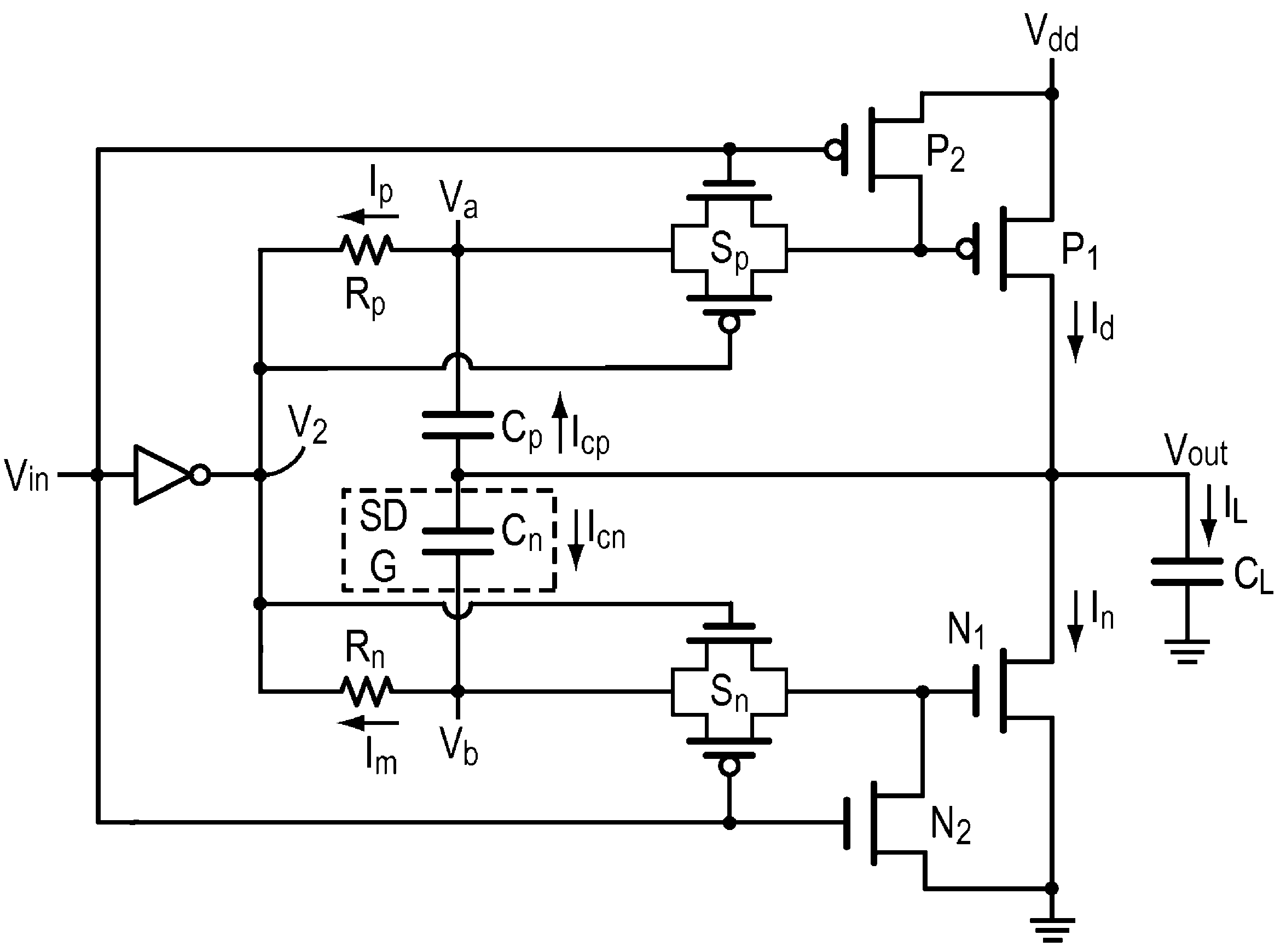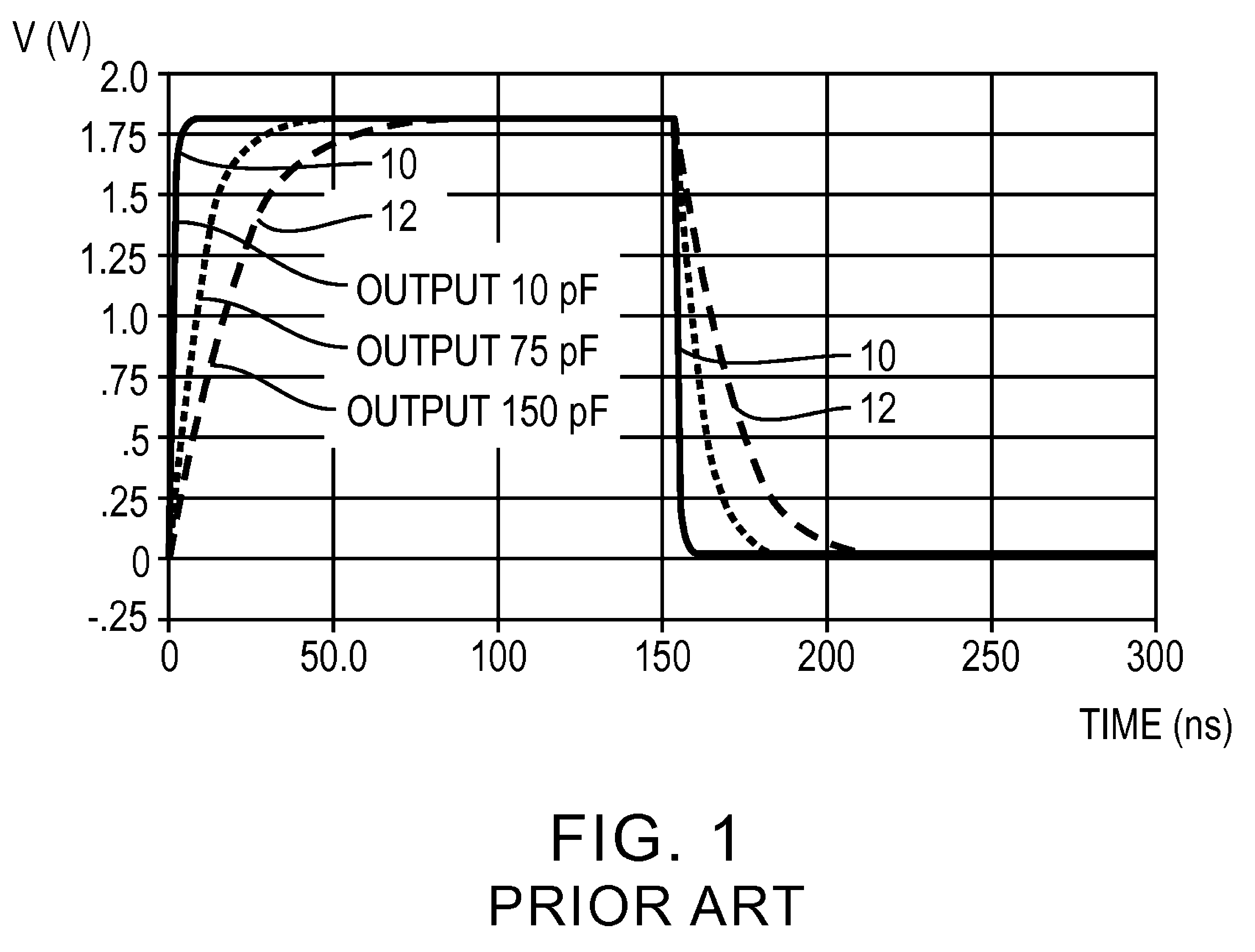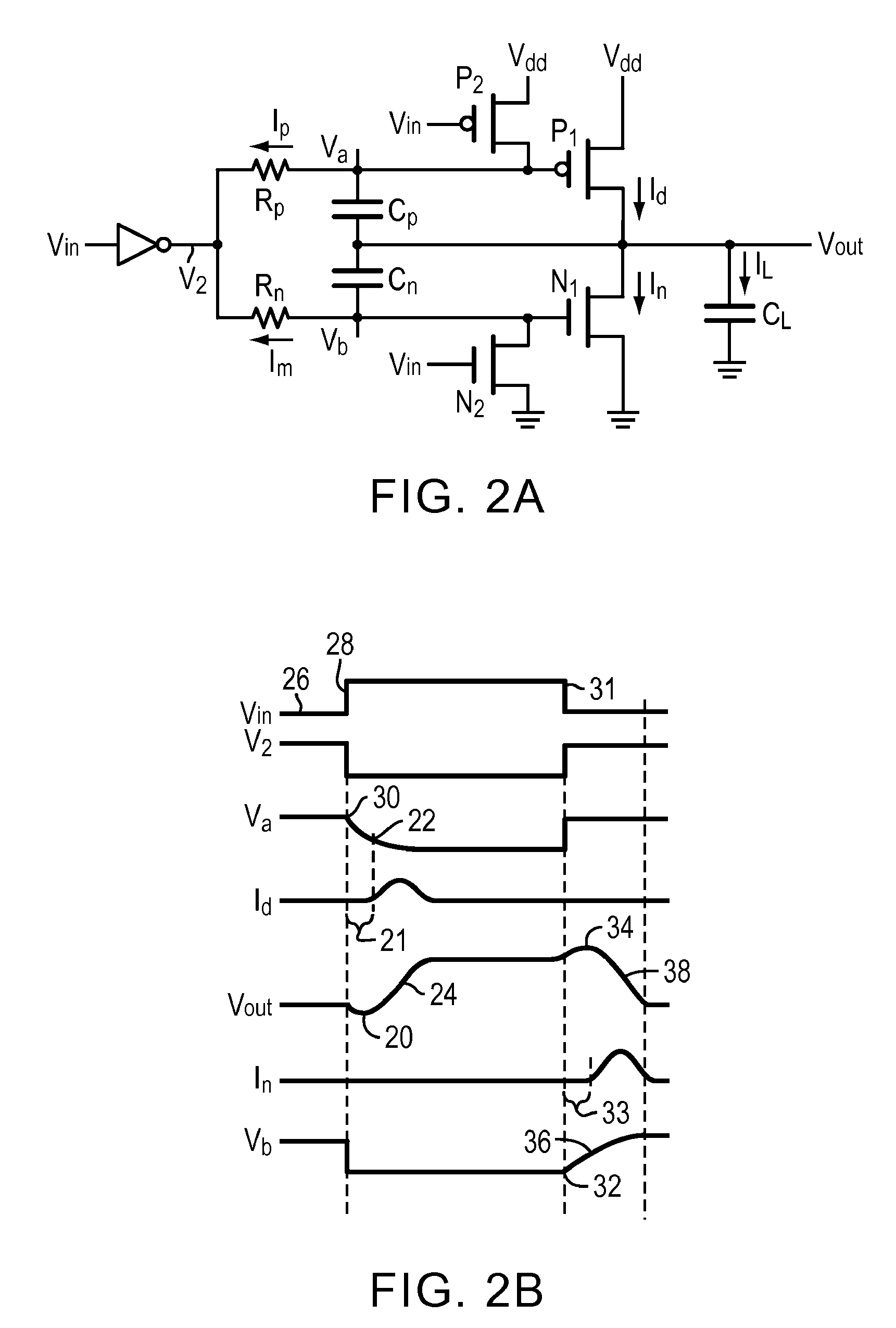Low speed, load independent, slew rate controlled output buffer with no DC power consumption
a low speed, load independent, slew rate control technology, applied in pulse manipulation, power consumption reduction, pulse technique, etc., can solve the problems that the data rate of the involved signals may not meet the rise and fall times of the slow edg
- Summary
- Abstract
- Description
- Claims
- Application Information
AI Technical Summary
Benefits of technology
Problems solved by technology
Method used
Image
Examples
Embodiment Construction
[0023]FIG. 2A is a simplified schematic illustrating a capacitive feedback circuit embodiment of the present invention. FIG. 2B is the associated timing diagram.
[0024]With Vin low 26, V2 is high and P2 on driving Va high and keeping P1 off. Vb is high turning on N1 that drives Vout low. When Vin goes high 28, V2 goes low, and N2 turns on, drives Vb low and turns N1 off. Ip rises drawing current from Cp, Cn and Cl, and Va starts to fall 30. Since P1 is not yet on Id is delayed 21, and Vout falls slightly 20 as some of Ip is taken from Cl.
[0025]Va falls to a point 22 where P1 starts to turn on supplying Id. Id charges Cl and Vout rises 24. As Vout rises some of Id flows through Cp to Va. This feedback action slows the fall of Va, slows the turn on of P1 and the rise if Id. Note that as Vout rises some of Id is diverted through Cn. Nonetheless, Vout rises more slowly but with more control and less dependence on Cl than in prior art buffers. Using other words, the feedback operation ope...
PUM
 Login to View More
Login to View More Abstract
Description
Claims
Application Information
 Login to View More
Login to View More - R&D
- Intellectual Property
- Life Sciences
- Materials
- Tech Scout
- Unparalleled Data Quality
- Higher Quality Content
- 60% Fewer Hallucinations
Browse by: Latest US Patents, China's latest patents, Technical Efficacy Thesaurus, Application Domain, Technology Topic, Popular Technical Reports.
© 2025 PatSnap. All rights reserved.Legal|Privacy policy|Modern Slavery Act Transparency Statement|Sitemap|About US| Contact US: help@patsnap.com



